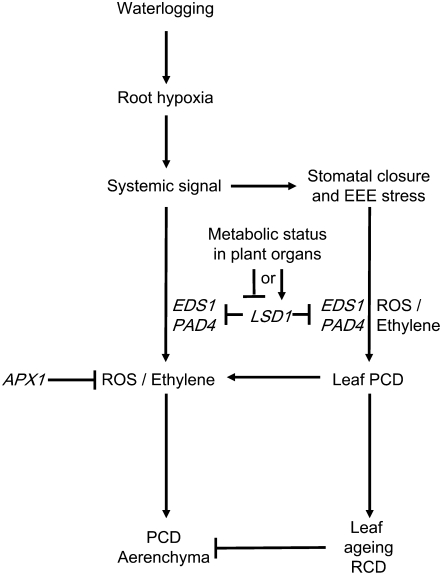Figure 8.
Proposed Working Model for Signaling Pathways That Regulate Aerenchyma Formation in Arabidopsis.
Root hypoxia produces a systemic signal that promotes ROS/ethylene formation, leading to the induction of aerenchyma and stomatal closure. Stomatal closure leads to EEE stress, which enhance ROS/ethylene systemic signaling and PCD in leaves (Mateo et al., 2004) and aerenchyma formation (Figures 1 to 7; see Suplemental Table 1 online). ROS/ethylene signaling operates in a positive feed-forward loop, which is negatively controlled by LSD1 and positively controlled by PAD4 and EDS1 (Figures 5 to 7). PCD during aerenchyma formation is independent from that in leaves and needs a tissue-specific signal. Severe PCD development (RCD) in leaves somehow restricts the development of aerenchyma.

